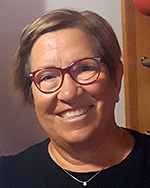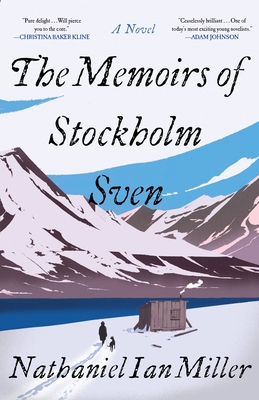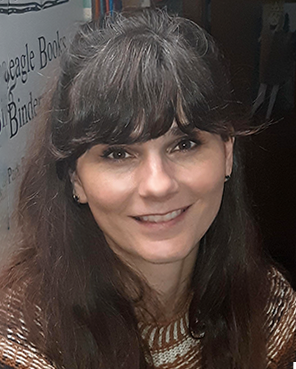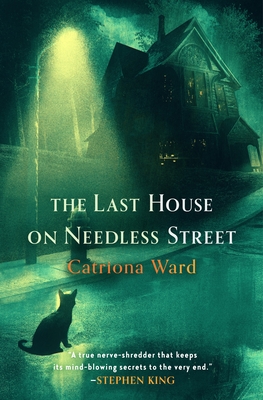|
|
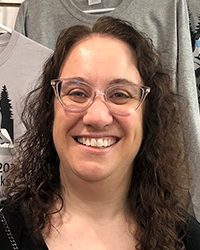 Jen Jen |
 |
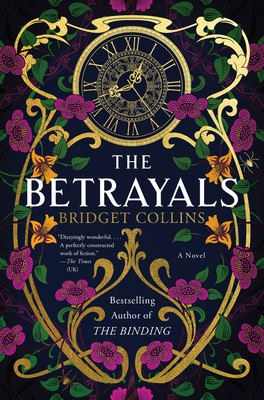
|
|
The Betrayals
Bridget Collins
Montverre is an old, elite (fictional) academy for boys that prepares the country’s brightest minds by focusing on the country’s pastime (obsession)—a game called grand jeu, the “great game.” The game involves math, music, science, art, philosophy, and languages. Leo and Carfax met at Montverre as students. Initially they were rivals, but after being forced to work together, eventually became friends. At the end of their second year, Carfax suddenly died. Years later, Leo is working as the Minister of Culture. When he makes the mistake of lodging a complaint about an upcoming bill with the Prime Minister, it is seen as anti-Party and he is forced to resign. The public excuse for his resignation is that he wants to return to Montverre and return to vigorous study of the grand jeu. When Leo returns to Montverre, he is surprised to learn that the Magister Ludi, the most sought-after position at Montverre, is held by a woman. More surprising, that woman, Claire Dryden, is the sister of Carfax. The narrative is told by Leo, Magister Ludi, a character known as “The Rat,” and Leo’s diary from his school days at Montverre. I was both excited and nervous to read The Betrayals because Collins’ first adult novel, The Binding, was one of my favorite reads. Once I started The Betrayals, I didn’t set the book down until I was nearly 100 pages in (and something pesky like the need to eat or sleep or work is what forced me to put it down at all.) Collins is likely the best contemporary writer of pacing and dialogue. There’s something about her writing that is so compelling. This book is about art, love, friendship, and of course, betrayal. It has so many secrets that I can’t share with you; you’re going to have to read it so we can talk about it.
|
| |
|
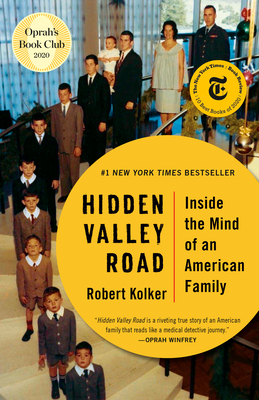
|
|
Hidden Valley Road
Robert Kolker
The Beagle Women's Book Group discussed Hidden Valley Road at its May discussion—WOW, what a book! This work of nonfiction tells the story of the Galvin family—12 children: 10 boys, 2 girls. Six of the boys are diagnosed with schizophrenia. The birth years of the children range from 1945-65. Interspersed with the family's struggles is an account of the progress of science regarding schizophrenia. These sections were just as personal as the writing about the Galvin family; the scientists were presented as humans with hopes and setbacks. Kolker's writing is even-handed, sympathetic, well-researched, and compelling. This book gave us so much to talk about, I highly recommend it for book groups looking for a good non-fiction read! |
| |
|
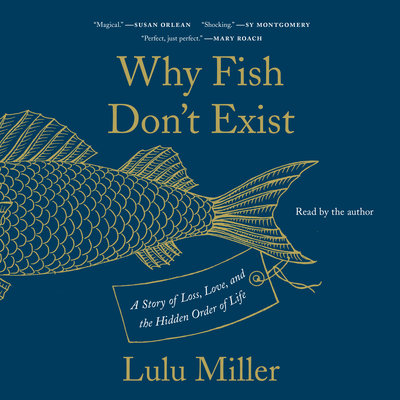
|
|
Why Fish Don't Exist
Lulu Miller
In addition to listening to Rivers of Fire with Tom, I've been listening to Why Fish Don't Exist by myself.
I surprised myself in choosing this book, but I'm glad I did. Like Hidden Valley Road, Why Fish Don't Exist is a blend of science and biography. The focus of the book is taxonomist David Starr Jordan. Never heard of him? I hadn't either. Jordan lived 1851–1931. He and his students discovered more than 2500 fish species. His collection was destroyed in the 1906 San Francisco earthquake, yet he picked himself up and started over. Included in the book is the uncomfortable truth that Jordan was a disciple of Louis Agassiz, viewed in contemporary times as a racist. The audiobook is read by the author, and I'm enjoying her delivery. I was listening to this on my way to work one day and once I got to the bookstore I found the print version so that I could share a passage with a friend. I was astounded to discover that there are really cool drawings included in the book! The beginning of each chapter has an illustration which pertains to the subject matter of the chapter and drawn in the style of the time.
The book is fairly short, so the audio is less than 5 hours. If you need a day trip audio, give this one a try!
|
| |
|
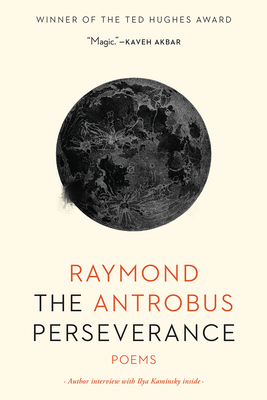
|
|
Perseverance
Raymond Antrobus
This book of poetry is amazing. The author's life history of struggling with race identity (Jamaican British), an alcoholic father, and the unavoidable loss of hearing makes for fascinating material. Antrobus uses a variety of forms and even includes some sign language. The poems are both personal and universal.
Click here to see Antrobus’s poem, Echo. As a treat, you can hear the author read the poem. |
| |
|
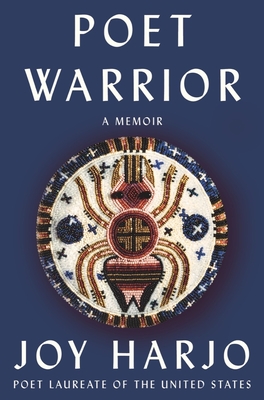 |
|
Poet Warrior
Joy Harjo
Poet Warrior is a spectacular memoir, interlaced with poetry and song lyrics, as befits a poet who has been named a United States Poet Laureate. Much of the poetry in Harjo’s Poet Warrior is her own, but also included are poems by a diverse group of poets—from Emily Dickinson to N. Scott Momaday. The poetry included is necessary to move the narrative forward and it’s done masterfully. At the beginning of Poet Warrior, Harjo’s poems about herself refer to the poet as Girl-Warrior and once she comes of age, switches to Poet Warrior. Along with Harjo’s personal history, a helpful and relevant mini-history of the area where she grew up in Oklahoma is included. Particularly relevant is the history of The Trail of Tears. Harjo was the oldest child of a hard-working and beautiful mother and an unreliable father. Once her father was out of the picture, Harjo’s mother remarried to an unkind white man who had little interest in his wife’s four “mongrel” children. The book is divided into six parts: Ancestral Roots, Becoming, A Postcolonial Tale, Diamond Light, Teachers, and Sunset. As you might expect, the last part, Sunset, refers to Harjo’s later years, as a grandmother. I thoroughly enjoyed reading Poet Warrior, so much that I read it all in one day (one very good day!)
|
|
 Sally Sally |
|
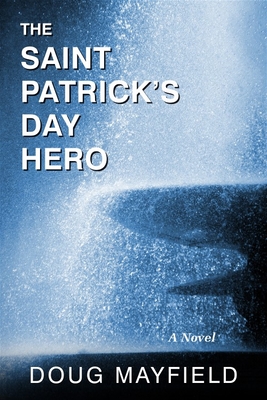
|
 |
The Saint Patrick’s Day Hero
Doug Mayfield
I can say two paradoxical things about this wonderful book. It’s about the aftermath of an horrific event—a mass shooting on a college campus—and it’s often funny.
William Kessler, a professor at the fictional Lothrup College in north-central Minnesota, is trying to put his life back together after the shooting. He’s uncomfortable being called the hero of the event, in which his son was killed. Afterwards, William had a breakdown, his wife divorced him, and he’s never told the full story of what happened that day.
A number of students were in the building where William’s office was located, and they didn’t receive the college’s active-shooter alert in time. When William discovers the alert was botched and the college is trying to cover it up, he wants to come forward with the information he has found. He’s in an ethical dilemma, because there would be difficult consequences if he made such a disclosure.
At the same time, William is experiencing the therapeutic effects of a close friendship, a new dog, the love of his family, the power of a new relationship, and the importance of meaningful work. And fishing.
I found this book to be a page-turner with lots to think about.
|
| |
|
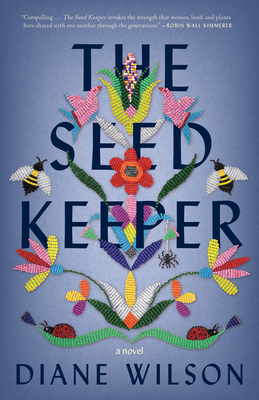
|
|
The Seed Keeper
Diane Wilson
After the death of her husband John, Rosalie Iron Wing left their farm and drove two hours north, to the cabin where she and her father lived until she was twelve. She was on a pilgrimage which she couldn’t articulate, but it was a journey home to her family and the ways of her people, the Dakota, and finally, a healing journey home to herself.
Rosalie’s father died of a heart attack when she was twelve. The welfare system snatched her up, declaring her a child without a family. She endured a series of painful placements in foster families, cut off from all that nurtured her as a child, never fitting in at school and making only one friend, Gaby Makespeace, another Native girl.
At 18, Rosalie married John. She added his name, Meister, to hers, unwilling to give up the name that was all that remained to her of her family. The two worked the family farm and had a child. Rosalie became increasingly concerned about what their agricultural practices were doing to the land and, eventually, to her husband.
When she left the farm and sought out her childhood home, Rosalie was surrounded by memories, by questions, and by a different rhythm of life. She reconnected with forgotten neighbors and family and took her place among them. This beautiful book, weaving history and fiction, tells the story of Dakota women who protected seeds for the future of their people. It tells of strong women who cared for the seeds, their children, their land, and their way of life. And it tells the story of one particular woman, Rosalie Iron Wing, and her journey to reclaim her heritage as a seed keeper. |
| |
|
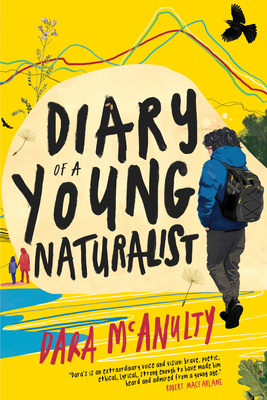 |
|
Diary of a Young Naturalist
Dara McAnulty
Dara McAnulty is passionate about nature and writes about it in gorgeous, poetic language. For example, his entry for Saturday, 15 September begins: “The first fallen leaves are pirouetting at my feet, rising, tumbling, skittering, falling again.”
The book chronicles the fourteenth year in the life of this singular young man. McAnulty is grounded in the natural world, and is also an activist, recognized around the world as a leader in the youth climate movement. He lives in Northern Ireland with his parents and two younger siblings. He says, “we are all autistic, all except Dad—he’s the odd one out…” Part of the life the diary chronicles are the challenges of living as an autistic person. This includes a particular lens on the world, as well as a great deal of misunderstanding and bullying.
Read the book to enjoy the beautiful language; to be inspired by what the activism of one person can accomplish; to be challenged to expand your understanding of autism; and to live into ways you might make a difference in the world.
|
| |
|
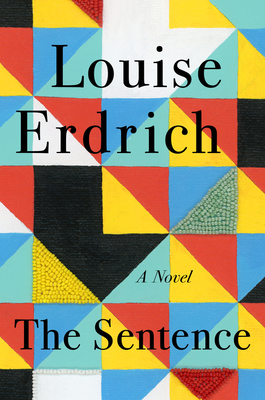 |
|
The Sentence
Louise Erdrich
I own a bookstore, which my daughter and I kept running throughout the lockdown during the pandemic. Minneapolis is my hometown. I watched the civil unrest after George’s Floyd’s death on television.
You can understand then, why I felt Louise Erdrich’s new book, The Sentence, was written for me—a sentiment I share with a legion of independent booksellers, whether or not they’re from Minneapolis.
The book is set in Erdrich’s store, Birchbark Books, and she appears in it from time to time. Here’s my favorite part: “I’m still not strictly rational. How could I be? I sell books!” It authentically shows bookstore life—there’s never quite enough room in the store, getting a PPP loan was instrumental in being able to keep staff during the pandemic; the necessity of pivoting to become a mail order business during the lockdown; the pleasures of being surrounded by books and those who love them; money is a constant worry; the staff complains about the vacuum cleaner.
In The Sentence, Birchbark Books has something Beagle and Wolf Books does not—a ghost. It haunts the store and particularly Tookie, a bookseller with a past, from All Souls’ Day 2019 to 2020, when Tookie finally is able to send the ghost on her way.
The book is unusual, very funny (particularly the first part), full of complicated characters and their complicated relationships with one another. It’s the first novel I’ve encountered that explores both the pandemic and the effect of George’s Floyd’s murder.
It's a timely read by a master storyteller. You won’t want to miss it. |
| |
|
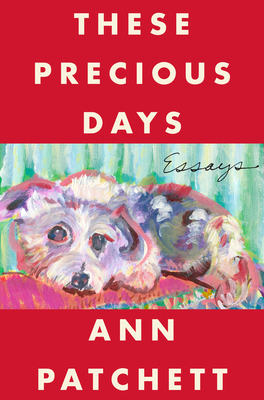 |
|
These Precious Days
Ann Patchett
Ann Patchett does two things in this collection of essays: makes writing them look effortless and makes you feel as though you’re her best friend. (Neither are true.)
The essays are very personal. In "Three Fathers" Patchett explores her relationships with her father and her two stepfathers, revealing the idiosyncrasies of each, but also sharing the richness they contributed to her life. When she stages a photograph of herself with the three of them at her sister’s wedding, one of her stepfathers remarks to her father, “You know what she’s doing, don’t you? She’s going to wait until the three of us are dead and then she’s going to write about us. This is the picture that will run with the piece.” And he was right!
"There Are No Children Here" discusses, at length, her decision not to have children.
The title essay explores life during the lockdown of the pandemic. The emphasis is on the story of the acquaintance, Sooki, whom Ann and Karl, her husband, invited to live with them in their home during this time. Karl had made arrangements for Sooki to be part of a clinical trial for pancreatic cancer in Nashville, where he and Ann live, and Ann felt that Sooki needed the comfort of a home with friends rather than being in a hotel.
Patchett discusses her writing process, her bookstore, her husband and their marriage. Several of the essays were previously printed elsewhere, which didn’t diminish my pleasure at reading them in this book.
Settle down with These Precious Days and a cup of tea, to catch up with an old friend.
|
| |
 |
 |
 |
|
|

Ann |
|
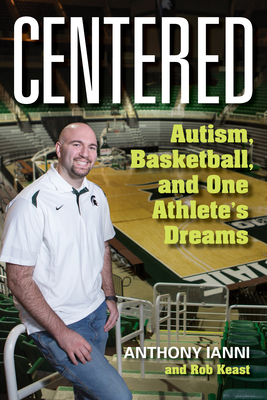
|
|
Centered: Autism, Basketball, and One Athlete's Dreams
Anthony Ianni
In Centered, Anthony Ianni shares his experiences from being diagnosed with autism as a young child to becoming a student-athlete and later a husband and father. Autism affects people differently but often presents challenges in communication, academics, and socialization. Ianni shares his experiences in an honest and enlightening way. Playing college basketball was a long-time dream for him. Whether readers are basketball fans or not, they will likely find themselves cheering for Anthony. Centered is a memoir that includes many basketball stories. However, first and foremost, it is the story of one man's perseverance and how, with the compassion and support of others, he was able to achieve his goals and dreams.
|
| |
|
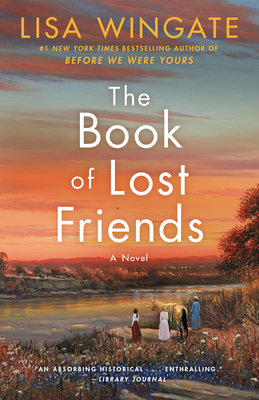 |
|
The Book of Lost Friends
Lisa Wingate
The Book of Lost Friends begins in the year 1875 with the story of Hannie Gossett. As the story starts, Hannie, a former slave, decides to leave her life as a sharecropper and travel in search of her birth family. They were separated when Hannie was very young, and the family members were sold to different owners. Lavinia and Juneau Jean, a privileged white woman and her Creole half-sister, are searching for their father to gain their inheritance and save themselves from financial destitution. They end up joining Hannie on her journey. The book alternates between Hannie's story and the story of Benedetta Silva, a young teacher who moves to the former Gossett Plantation in 1987 to start her first teaching job. The poverty of the area and difficulties engaging her students are significant obstacles for Benny. The stories of Hannie and Benny take place over one hundred years apart but are tied together in that they both involve the Gossett Plantation and the town of Augustine, Louisiana. After learning about the "Lost Friends" ads published after the Civil War hoping to reunite families separated by the slave trade, Lisa Wingate was inspired to write The Book of Lost Friends. It is a story that fans of historical fiction won't want to miss.
|
|
|
|

Gail |
|
|
|
|
| |
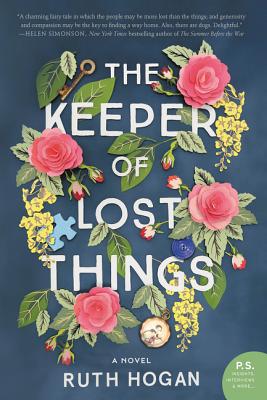
|
|
The Keeper of Lost Things
Ruth Hogan
Anthone Peardew is an aging writer. Laura is his assistant, working with him in his beautiful old Victorian home. When Anthony passes, Laura finds herself the heir to Anthony's home and his locked study. She finds that the study is filled with lost objects that Anthony has picked up on his daily walks. He has labeled them carefully. He instructs Laura in his will to try to return as many objects as she can to the rightful owners. The story is filled with quirky characters and even a ghost. The Keeper of Lost Things is a heartwarming read about second chances and joyful discoveries. |
| |
|
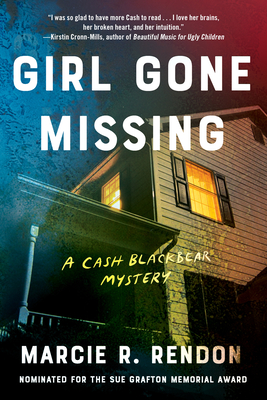 |
|
Girl Gone Missing
Marcie Rendon
Author Marcie Rendon was in Park Rapids last fall, speaking at Headwaters Center for Lifelong Learning. Girl Gone Missing is her second mystery. What makes her books different from a lot of mysteries is that she is a Native American author with a young female Native American protagonist. Cash, her given name is Renee, is attending college in the Fargo-Moorhead area. Cash hears about a white girl who has suddenly disappeared. Then another girl disappears. She begins to dream about the girls somewhere in Minneapolis. When she wins an award at school, she is to attend the ceremony in Minneapolis. Cash drives her own car following two professors in their car, thinking that she will be safe. After drinking a coffee, she wakes up in the room where the girls are and she has to find a way out for all of them. The author brings our attention to both white and Native American girls abducted from our area and never seen again. A fast- paced mystery for men and women. |
| |
|
|
|
|
|
| |
|
|
|
|
|

Hannah |
|

|
|
Braiding Sweetgrass
Robin Wall Kimmerer
Kimmerer is both a professor of botany and a Citizen of the Potawatomi Nation. She speaks with authority from different perspectives: scientific, practical, and spiritual.
It’s not often that a single book makes a shift in my world view, but I think this one has done it. She explains the indigenous understanding of the natural world, where every being is a “person,” including plants and even rocks. The key to health is reciprocity: taking care of each other. Her community feels and expresses gratitude and considers how to confer benefit to the plants and animals who sustain them. The larger society just tries to take and take. Look where that’s gotten us…
Some of these essays are celebrations, very fun to read. Others are quite scary. However, Kimmerer is optimistic. If she can feel hope, so should I. And I am moved to be more conscious of waste, and to make a donation to one of the causes she champions.
|
| |
|
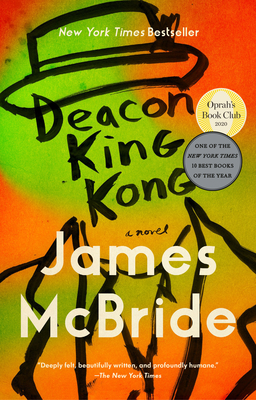
|
|
Deacon King Kong
James McBride
I picked this up because of the way it’s talked about in Louise Erdrich’s The Sentence, and I’m so glad I did! In the early pages I thought it would be a downer, but by the end I was filled with joy. It takes place in 1969, when heroin is destroying lives in the housing projects in Brooklyn. The book is funny and worrying in turns, but always intriguing. There are several characters you grow to love, including a gangster, a cop, and church folk. The title character is an old drunk who, in the first paragraph, staggers out, points a gun in the face of a young drug dealer, and pulls the trigger. Deacon King Kong, named for the homemade hooch he loves, is therefore a walking dead man. How can this lead to anything but tragedy? The road forward is twisted and well worth traveling.
|
| |
|
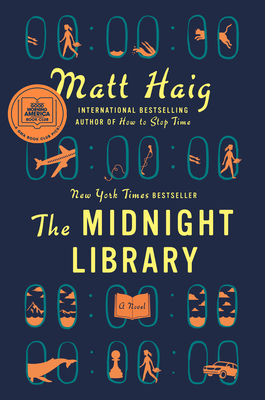 |
|
The Midnight Library
Matt Haig
I am super sensitive about spoilers, but I need to talk about the plot a bit because there aren’t a lot of things to compare this novel to: It’s a Wonderful Life meets the multiverse? Spoiler alert: Nora is so depressed about her lousy life that she kills herself. However, she discovers that between life and death there’s a Midnight Library where an infinite number of books contain alternative lives, based on her regrets for decisions she made that led her to her suicide.
It’s good to picture someone you lost sitting in a library surrounded by these books that are peeks into the multiverse. Or to wonder, starting with a decision you regret, what life you may be leading somewhere had you taken a different path. |
|
| |
 |
 |
 |
|
|

Lee |
|
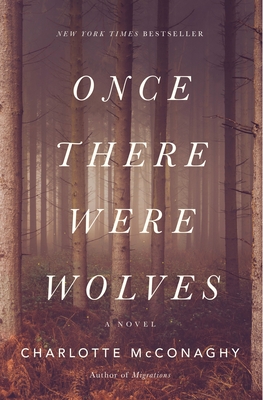
|
|
Once There Were Wolves
harlotte McConaghy
Inti Flynn brings her twin Aggie to the Scottish Highlands where she leads a group of biologists who are working to introduce 14 wolves into the environment. The twins have secrets, particularly why cannot Aggie speak?
The local police chief, Duncan, wants to be certain that the people under his watch stay safe, whether they are in favor of the wolves or not. But he becomes close to Inti, and he, too, has secrets.
So much of this novel swirls around people trying their best to protect others ... wolves, friends, relatives, lovers ... but The best-laid schemes o' mice an' men / Gang aft agley.
This is a beautifully written and incredibly immersive novel. The natural descriptions are amazingly well done, and Inti is a fascinating character. It also provides a damning portrait of spousal abuse and the fact that it too often goes unacknowledged.
There are very definitely adult themes and descriptions in this book.
|
| |
|
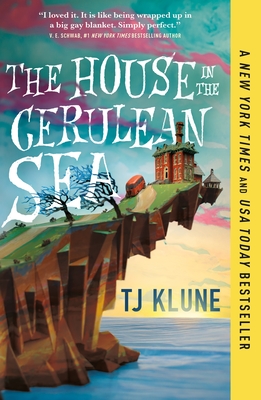 |
|
The House in the Cerulean Sea
TJ Klune
Linus Baker has a very solitary and very unsatisfying life. His only friends are his cat and his records (think Bobby Darin, not Beethoven.) He is a Case Worker at the Department in Charge of Magical Youth, and he spends most of his time diligently poring over and writing detailed reports on the orphanages where the youth are housed.
Extremely Upper Management unexpectedly summons him and sends him off on a month-long mission to an island orphanage. They need a comprehensive and meticulous evaluation of the facility. There he meets a collection of six children; Lucy (short for Lucifer) may be the most human-appearing of the orphans.
There are plenty of secrets to be uncovered, and the author does a magnificent job of weaving an enchanting story about family. Although 400 pages, it reads quickly, and it is (really) one of the best books I have read in the past year.
|
| |
|
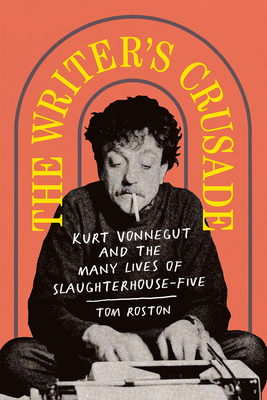 |
|
The Writer's Crusade: Kurt Vonnegut and the Many Lives of Slaughterhouse-Five
Tom Roston
Slaughterhouse-Five or The Children's Crusade by Kurt Vonnegut was first published in 1969. Reading it is a prerequisite for reading this book, although it’s fine if you have not picked it up for years. After reading this, though, you will almost certainly find it necessary to go back and re-read Slaughterhouse-Five.
Much of the book examines whether or not Vonnegut suffered from PTSD from his service in WWII; ultimately, though, that question may not be able to be resolved and may not even matter. More importantly, the author provides a great deal of fascinating commentary based on interviews with Vonnegut’s children and friends, and with authors of other books about war. (Tim O’Brien’s insights stand out.) Roston’s book is meticulously researched and there are moments when Vonnegut’s phrasing and style pop up in his writing. Especially fascinating are alternate versions of segments that Roston has pulled from the multiple draft versions found in Vonnegut's papers at the Lilly Library at Indiana University Bloomington.
Even though he concludes that whether or not Vonnegut suffered from PTSD, that does not mean that the trauma of his time in WWII was something that he could simply “get over.” (He really takes Malcolm Gladwell to task for his 2004 article in The New Yorker where he concludes that “we have become blind to the fact that the past—in all but the worst of cases—sooner or later fades away.”)
The Writer's Crusade is an absolutely fascinating book and provides the reader with details about Vonnegut and his work, but it also highlights a number of other important war authors. |
|
| |
|
| |
|
|
|

Tim
|
|
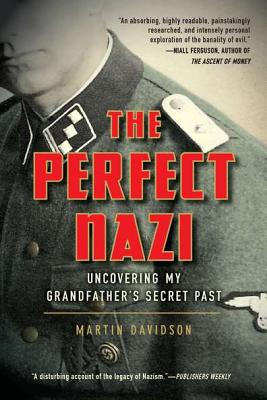
|
|
The Perfect Nazi: Discovering My Grandfather's Secret Past and How Hitler Seduced a Generation
Martin Davidson
Each family has its own unique history. Often, nestled deep in misty reaches are events we've agreed, for whatever reasons, to let into oblivion. It's likely something less innocuous than smoking out behind the garage, or the first fumbling experiments with sex. It might be a great-great Uncle who was caught as a horse thief. Or maybe it was a distant relative who owned slaves. Maybe your mother's distant cousin was Bernie Madoff? Or maybe you find that your beloved Grandpa was a Lieutenant Colonel in the German SS. Oh, and not just in the SS, but was one of the founding members of the German Nazi Party, joining in 1926.This is exactly what happened to Martin Davidson, the author of this book. Rather than be silent, though, he boldly ferrets out the truth of his grandfather's participation in this fiasco of all fiascos. What might have caused him to support such a movement? What were his crimes, if any? It's a tough look at his family's history, in an effort to understand, and come to terms with it.
|
|
|
Would you like to be a guest reviewer?
Email Sally at sally@beagleandwolf.com |
| |
|
|
|
|
|
— page top —
|
|



 Jen
Jen




 Sally
Sally
















